Thinking of Putting Flowers on a Cake? Read This First.
I’ll never forget the first wedding cake I delivered with a huge, gorgeous cascade of fresh flowers. Honestly, I was so proud of that cake—the buttercream was flawless, the edges were sharp… I felt like a real pro. The florist handed me a bucket of these stunning, dewy roses, and I just snipped the stems and pushed them right into the side of the cake.
In this article
It looked incredible. For about an hour.
Then, I watched in slow-motion horror as the delicate petals started to get these ugly brown spots where they touched the fat in the frosting. It was a rookie mistake, and a lesson I learned the hard way. Putting flowers on a cake is so much more than just making it look pretty for a photo. It’s a real craft that has to balance beauty with food safety and, frankly, a little bit of engineering.
This guide is basically everything I’ve learned over the years, from my own trials and a lot of errors. We’re going to get into the different kinds of flowers you can use, the critical safety rules you can’t ignore, and the techniques that make a cake look like a professional centerpiece instead of a DIY project gone wrong.
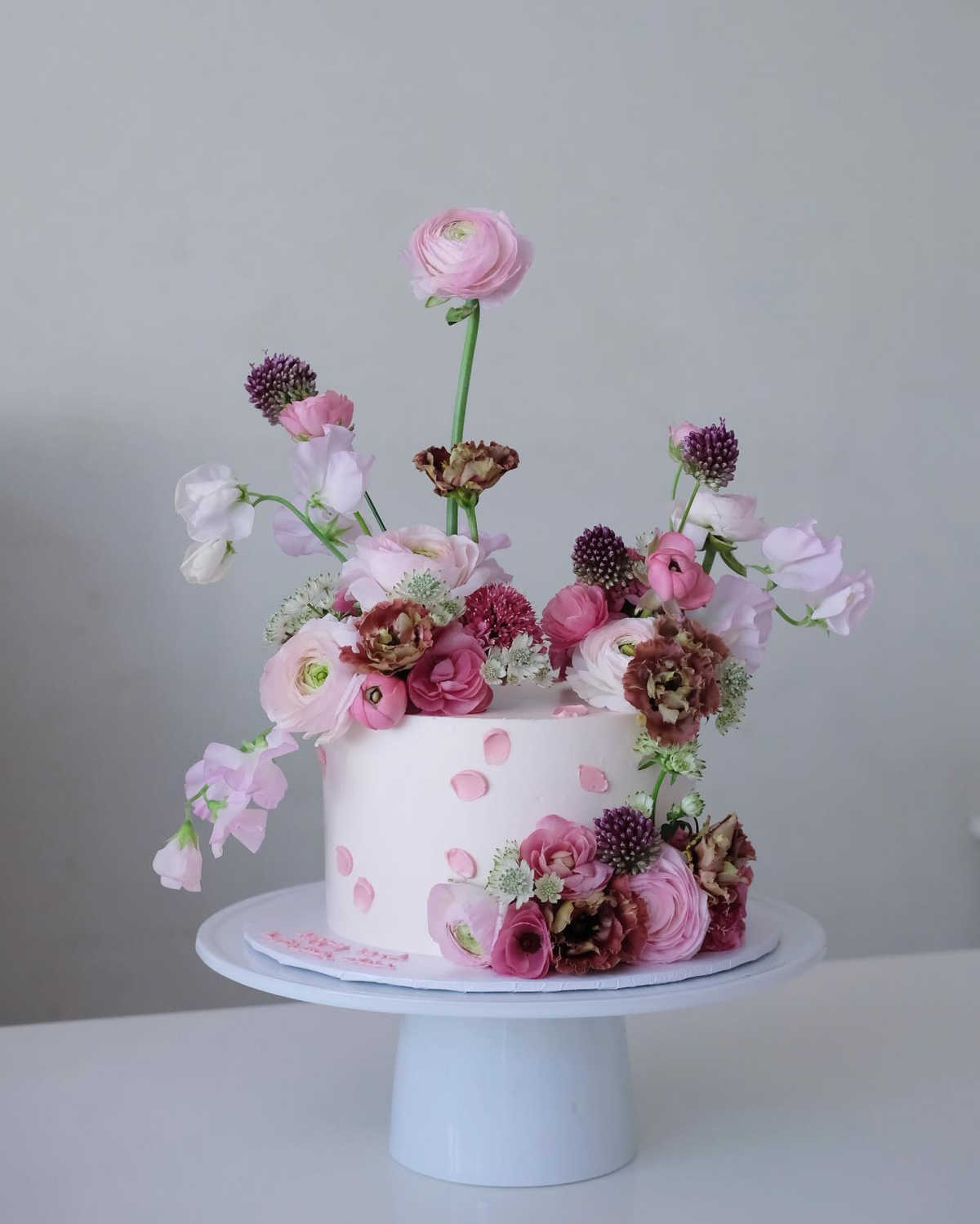
So, What’s the Plan? Fresh, Sugar, or Buttercream Flowers?
Before you even dream about a design, you have to pick your medium. Each type of flower has its pros and cons, and your choice here is going to impact your timeline, your budget, and the whole vibe of the cake. I use all three, but for very different situations.
The Vibe: Fresh & Natural
Fresh flowers bring a kind of life to a cake that’s tough to fake. You get that authentic texture, those subtle shifts in color, and sometimes even a beautiful scent. They’re perfect for rustic, bohemian, or garden-party-style events. From a money standpoint, they can be a lot more affordable than handmade sugar flowers, especially if you use big, in-season blooms.
The Catch: This is where things get serious. You absolutely cannot use just any flower. Many common, beautiful flowers are toxic if eaten (we’ll get to that list in a minute). On top of that, most flowers are grown with systemic pesticides that are absorbed into the plant and can’t just be washed off. And let’s not forget wilting. A flower can look perfect in a cool bakery, but after a couple of hours in a warm event space, it can droop and look just plain sad. Success here is all about choosing the right flowers and prepping them meticulously.
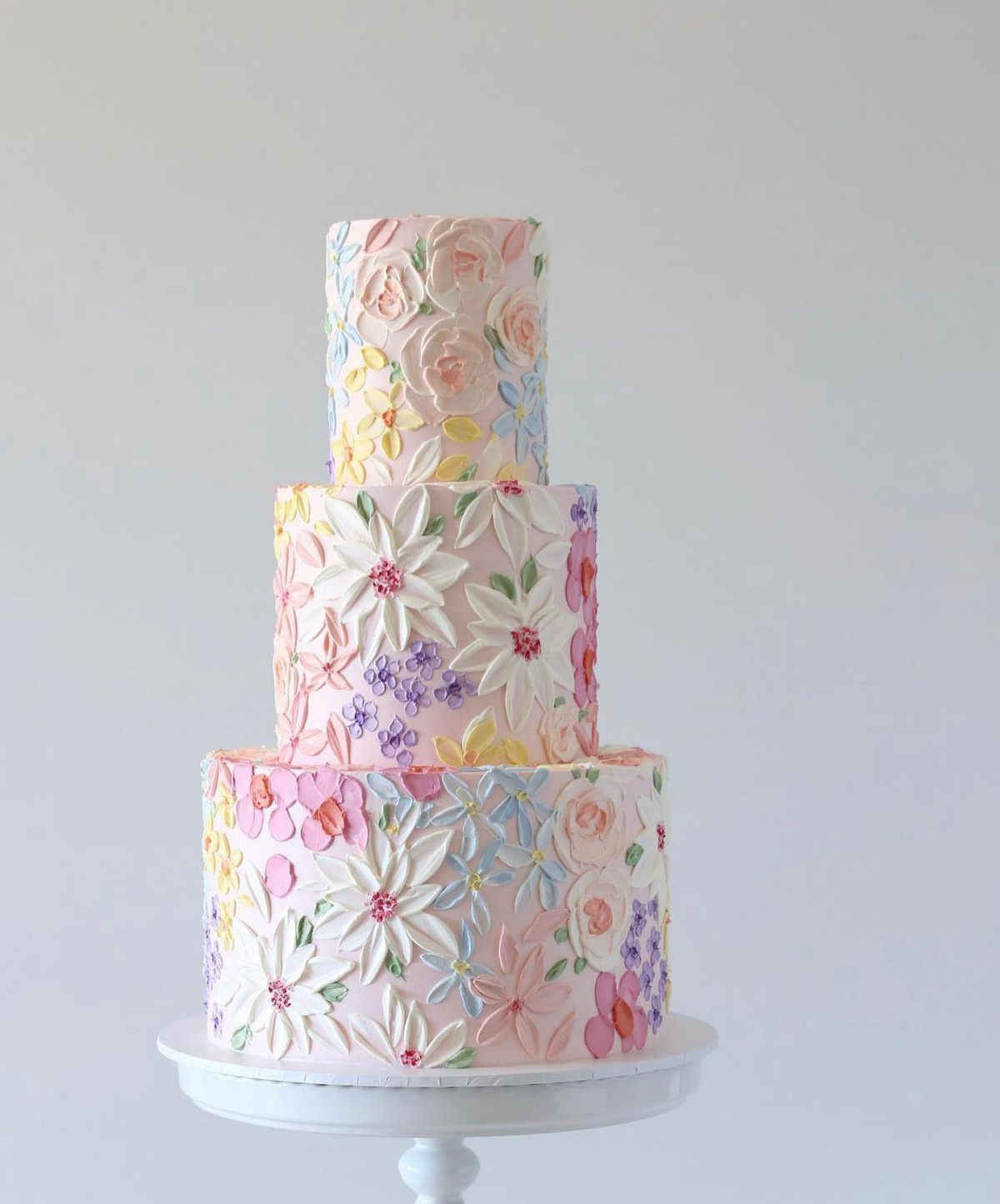
The Vibe: High-End & Artistic
Sugar flowers, usually made from gumpaste, are the top-tier of cake art. To be honest, they’re my favorite for those show-stopping wedding cakes. The biggest plus is you have complete control. Want black peonies in August? No problem. They’re also 100% food-safe (when made with edible materials, of course) and the client can even save them as a keepsake.
The Catch: Time and money. Sugar flowers are incredibly labor-intensive. A single, super-detailed English rose can easily take two or three hours of focused work. That labor is directly reflected in the price—expect a single, complex sugar flower to add anywhere from $25 to $60 to the cost of a cake. They are also EXTREMELY fragile. I’ve had more than one heart-stopping moment when a finished piece got chipped right before delivery.
The Vibe: Charming & Delicious
Buttercream flowers are a fantastic middle ground. They’re piped with the same frosting that’s on the cake, so the entire decoration is not only edible but delicious. A skilled decorator can pipe them much faster than they can build a sugar flower, making them a more budget-friendly way to get a full, floral look.
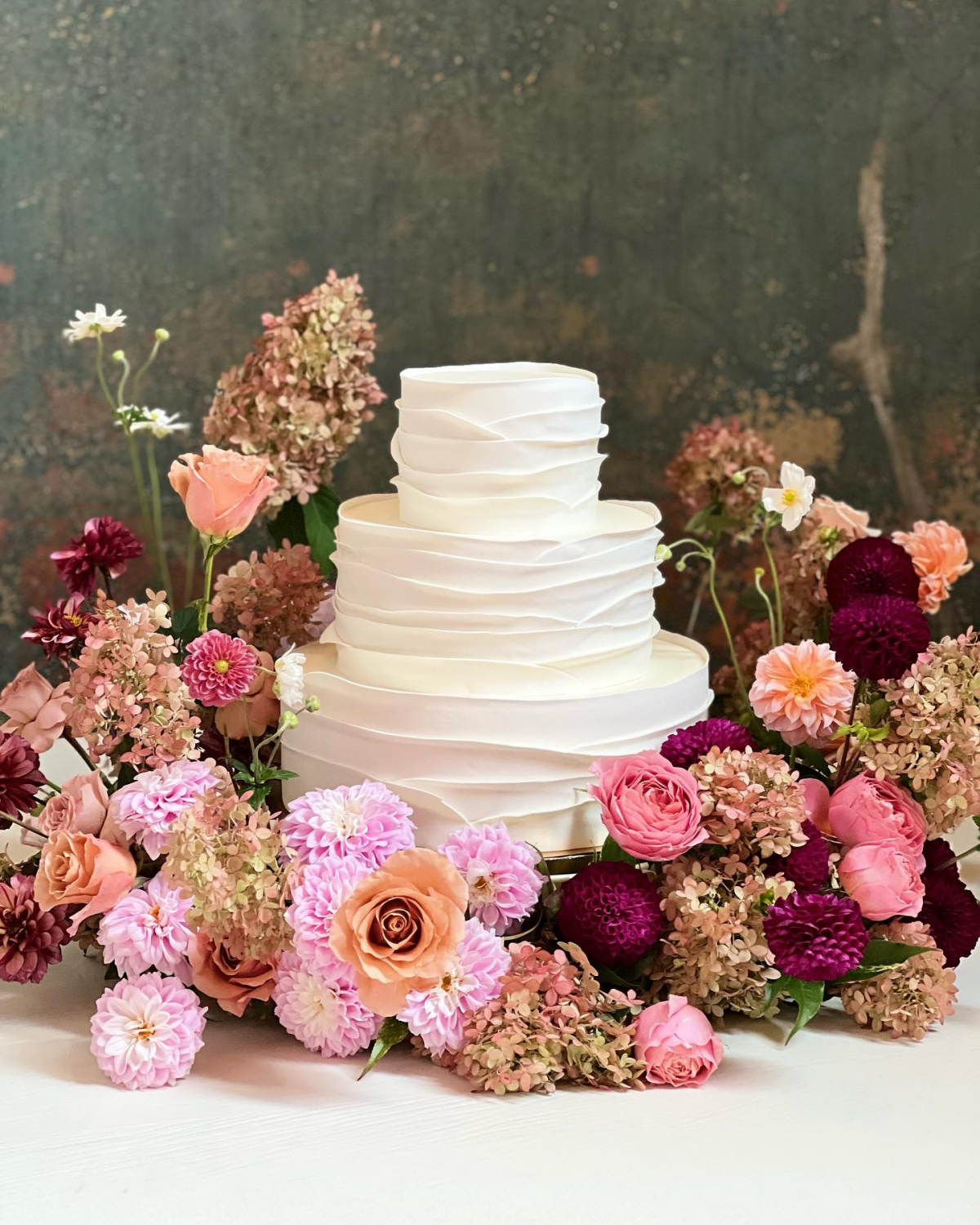
The Catch: Realism and stability. You’re not going to get the paper-thin, delicate petals of a gumpaste flower; buttercream has a softer, more impressionistic style. They are also super sensitive to heat. Even a stable Swiss meringue buttercream will start to soften in a warm room or outdoors. I always tell my clients these cakes need to stay refrigerated for as long as possible before serving.
Okay, Let’s Talk Safety—This is Non-Negotiable
This is easily the most important part of this whole guide. A beautiful cake that makes someone sick isn’t just a failure, it’s a disaster. These are the strict rules we follow, learned from food safety courses and years of experience. They are not optional.
The Unsafe Flower List: Just Don’t Do It
So many gorgeous flowers are poisonous. Even a tiny bit of pollen or sap leaching into the frosting can cause anything from an upset stomach to a serious medical issue. I once heard a story about a baker who used fresh oleander on a cake, and the entire wedding party got sick. Your first job is to know what to avoid completely. This isn’t a complete list, but these are some of the most common offenders I see people mistakenly use:
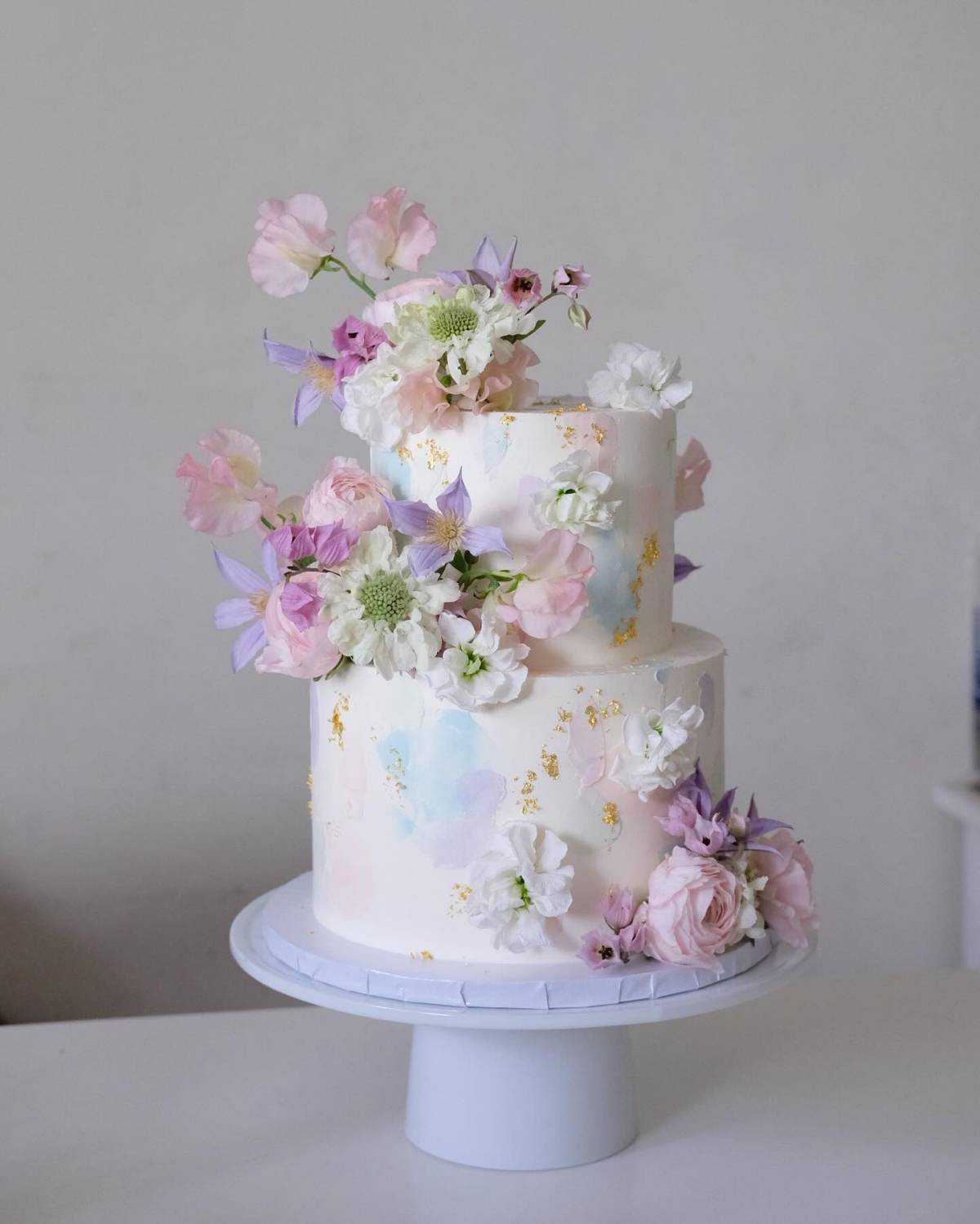
- Hydrangea: Looks beautiful, but contains cyanide.
- Calla Lily: Contains crystals that cause pain and irritation if eaten.
- Lily of the Valley: Highly toxic and can affect the heart.
- Daffodil: The whole plant is unsafe, but the bulb is especially toxic.
- Foxglove: A source for a heart medication, which tells you all you need to know.
- Sweet Pea: The peas are toxic and can cause serious illness.
- Oleander: One of the most poisonous common garden plants. Avoid at all costs.
- Ranunculus: Can cause mouth blistering.
- Poinsettia: The milky sap is a known irritant.
Good to know: When in doubt, look it up on a reliable source like the Poison Control Center website or a university agricultural extension site. Never, ever trust a random blog post. If you can’t confirm a flower is 100% non-toxic, it does not touch the cake. Period.
The Safe Flower List: Your Go-To Blooms
So, what can you use? Don’t worry, the list of generally safe options is long and beautiful! These are flowers that are widely considered non-toxic and are commonly used by professionals. Just remember, “safe” still means they need to be sourced carefully and prepped correctly.
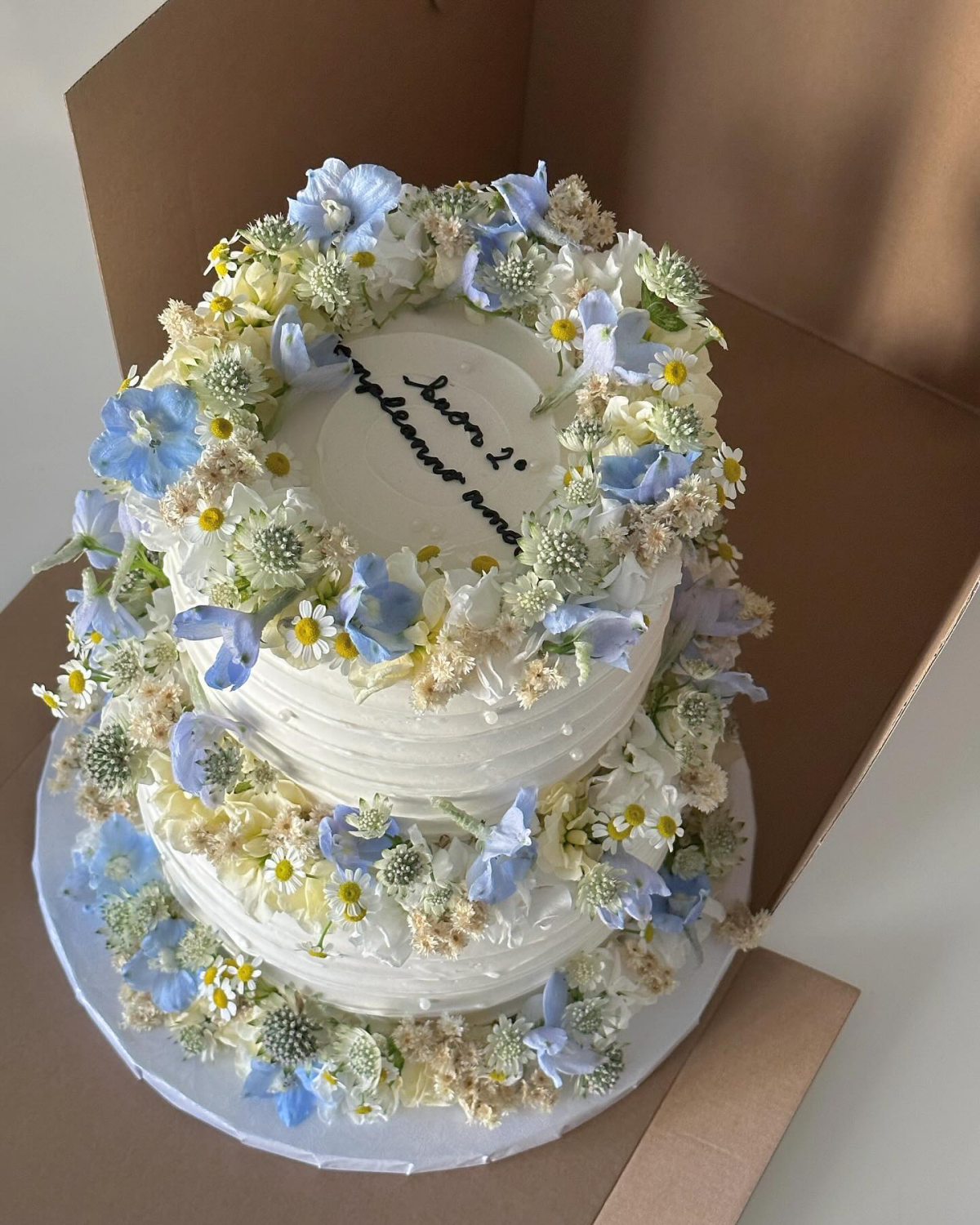
- Roses
- Carnations & Dianthus
- Freesia
- Sunflowers
- Pansies & Violas (often sold as edible)
- Orchids
- Stock
- Lisianthus
- Scabiosa
Heads up! A quick word on Baby’s Breath (Gypsophila). You see it everywhere, right? Well, it’s technically considered mildly toxic and can cause skin irritation and an upset stomach. While many pros use it for filler, it should always be prepped with a barrier and never, ever touch the cake directly.
How to Source and Prep Your Flowers
Even a non-toxic rose can be a problem. Most flowers you buy from a typical florist are drenched in pesticides. My rule is simple: if I can’t guarantee it’s organic and pesticide-free, I assume it’s contaminated and treat it as such.
When you talk to a florist, be very direct. Don’t just say you need clean flowers. Ask them specifically: “Are these flowers grown organically or considered edible-grade? Have they been treated with systemic pesticides?” This language tells them you know what you’re talking about. Even with their assurances, every flower gets a gentle bath in cool water and is laid out to air dry on paper towels.

The Barrier Method: How to Put Flowers in a Cake Safely
You must never, ever push a bare flower stem into a cake. Stems have been sitting in water (sometimes with chemical preservatives), they can have dirt on them, and they leak bitter sap. You need a physical barrier. Here are the pro methods:
1. The Floral Tape Wrap: This is the classic technique. It’s pretty simple once you get the hang of it. First, you’ll snip the flower stem to about an inch long. Next, grab some 22 or 24-gauge floral wire (you can get this at any craft store like Michaels or online) and poke it into the base of the flower head. Finally—and this is the key part—you’ll tightly wrap both the short stem and the wire with green floral tape. You have to stretch the tape as you go, which activates its stickiness and creates a food-safe seal. The clean, wrapped wire is what you insert into the cake.
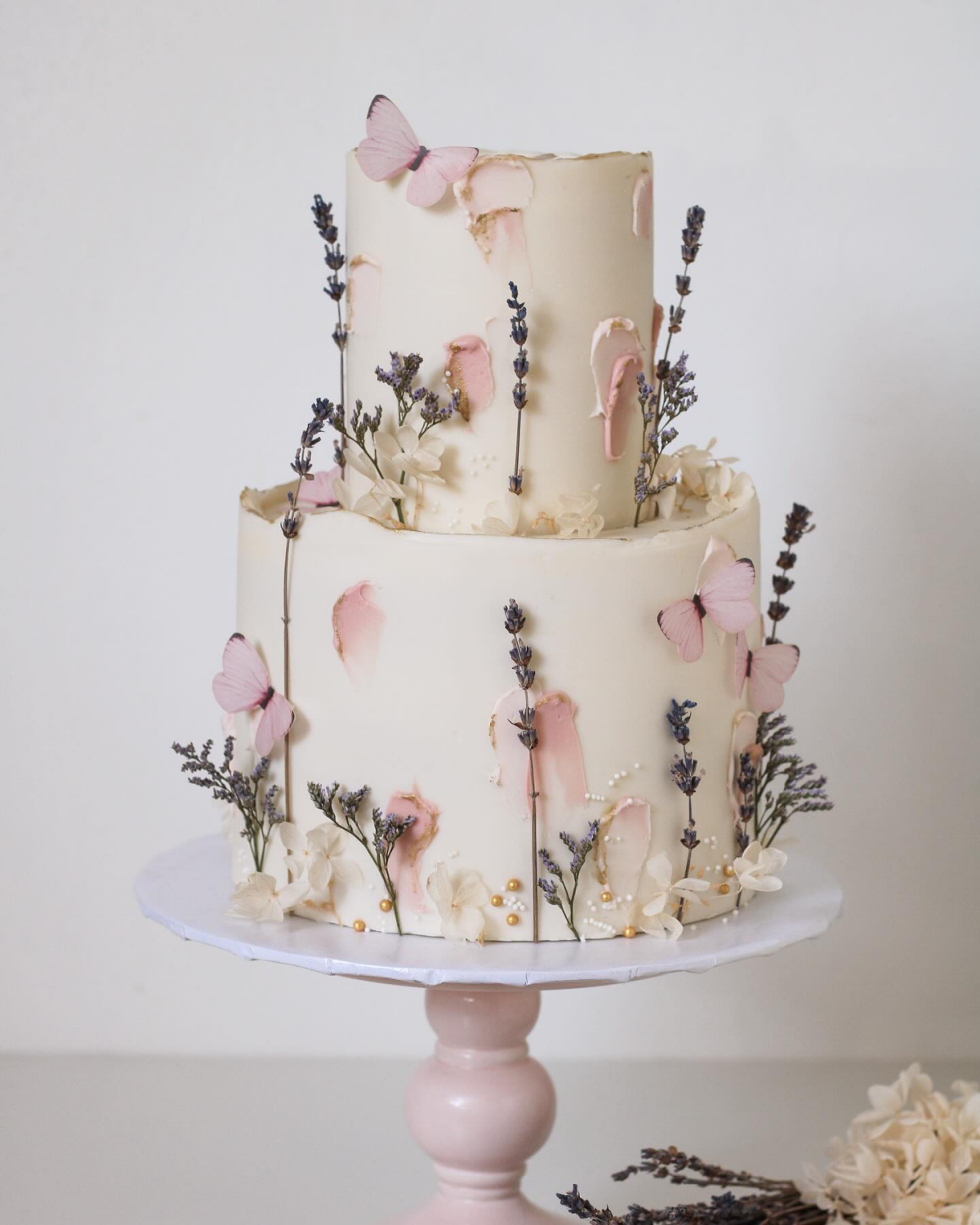
2. Posy Picks: These are little plastic vials with a spike on the end. You can put a tiny bit of water in them to keep the flower fresh, stick the stem in, and then insert the plastic pick into the cake. They’re great for single blooms.
3. The Straw Trick: A great hack if you’re in a pinch! Just push a regular drinking straw into the cake where you want the flower to go. Cut the straw flush with the cake surface. Then, you can slide your wrapped flower stem right into the straw. The plastic acts as a perfect liner.
The Nitty-Gritty on Buttercream Flowers
Piping buttercream flowers is all about muscle memory and getting your frosting consistency just right. If your buttercream is too soft from a warm kitchen, your petals will look droopy and melted. Just pop the bowl in the fridge for 5-10 minutes and whip it again. If it’s too stiff (too cold), your petals will break. Just warm the outside of the bowl with your hands to soften it up.
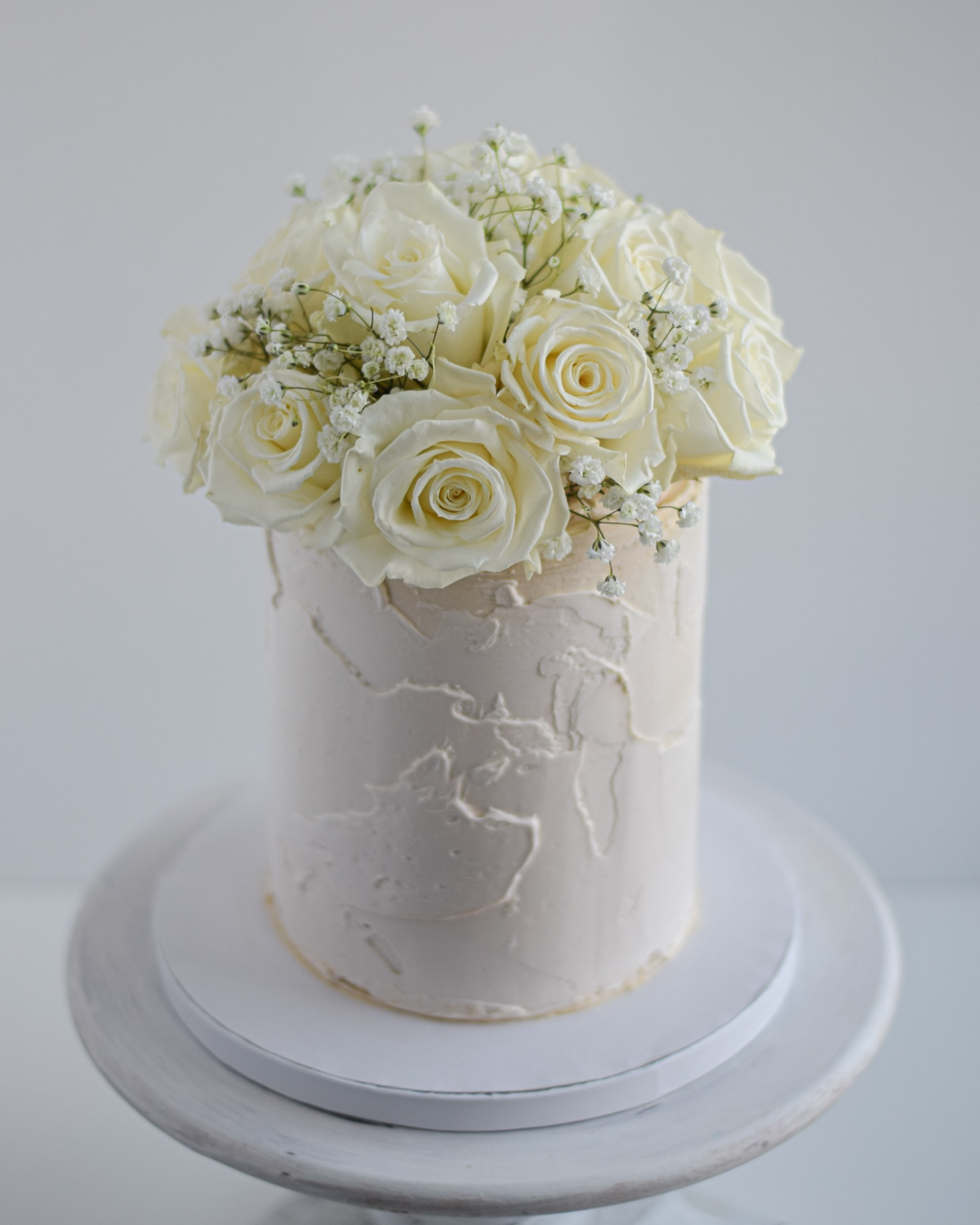
You don’t need a million tools. To start, you really only need three piping tips:
- A petal tip (like a Wilton 104): For roses and other multi-petal flowers.
- A leaf tip (like a Wilton 352): For making quick, realistic leaves.
- A large star tip (like a Wilton 1M): For simple, beautiful rosettes and filler.
Quick tip for beginners: Don’t practice on your perfectly frosted cake! Pipe your flowers onto small squares of parchment paper placed on a flower nail (a little spinning tool). Then, you can slide the parchment squares onto a cookie sheet and pop them in the freezer for 15 minutes. Once they’re firm, you can easily lift them with a spatula and arrange them on the cake without smudging a thing. It’s a total game-changer.
Let’s Talk Money: A Realistic Look at Costs
People often wonder why floral cakes cost what they do, and I think it’s important to be transparent. It all comes down to materials and time.
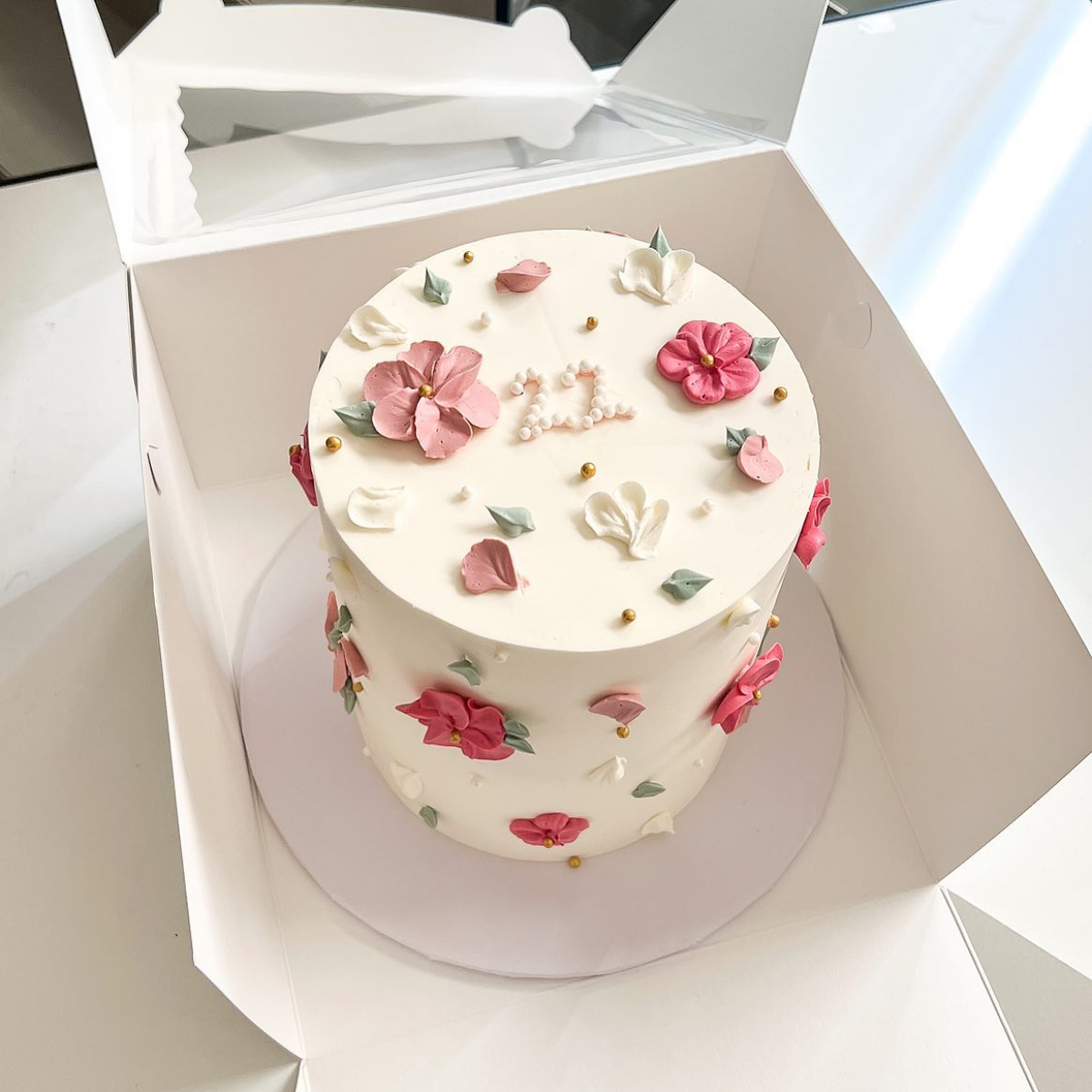
- Fresh Flowers: You’re paying for the market price of the flowers (which could be $20-$40 a bunch, depending on the type) plus the decorator’s time to source, clean, prep, and arrange them—which can easily be an hour or more of skilled labor.
- Buttercream Flowers: The cost is almost entirely labor. A cake covered in dozens of individually piped roses takes a lot more time than a simple, smooth-frosted cake, and the price reflects that.
- Sugar Flowers: This is where you’re paying for true artistry. A single spray of five to seven complex gumpaste flowers could represent 10-15 hours of meticulous work. That’s why they’re a luxury item.
A Final Word of Advice
Oh yeah, one last thing I learned the hard way: transport. If you have a large or heavy floral arrangement, don’t put it on the cake until you get to the venue. I once hit the brakes too hard and watched in horror as a few heavy roses slid down the side of a tiered cake, leaving a huge gash. Now, I always transport the flowers in a separate cool box and do the final arrangement on-site. It takes an extra 30 minutes, but it guarantees perfection.
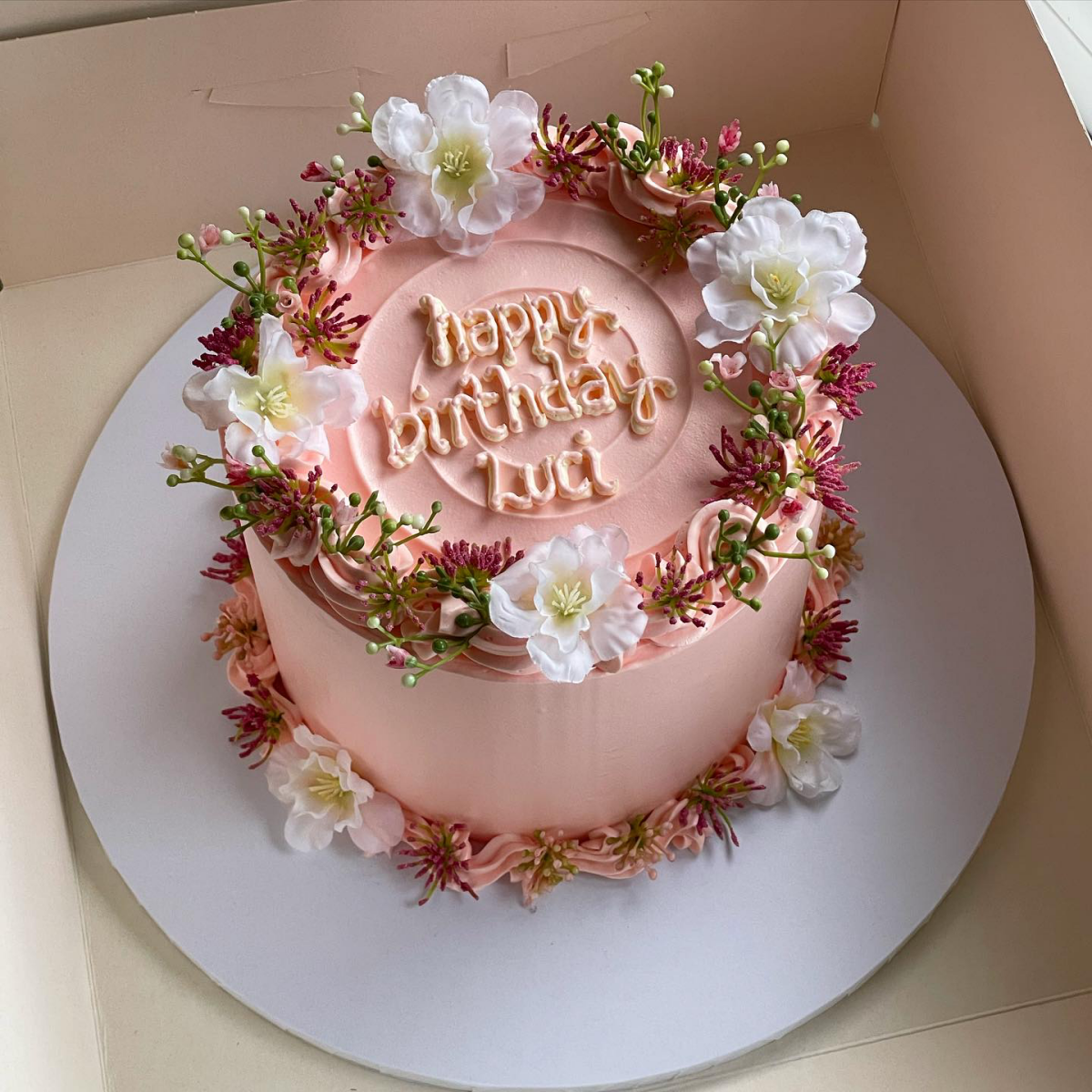
Working with flowers is one of the best parts of decorating cakes, but that beauty has to be built on a foundation of safety and skill. Start simple, practice on parchment paper, and always, always prioritize the well-being of the people who will be eating your creation. Happy decorating!
Galerie d’inspiration
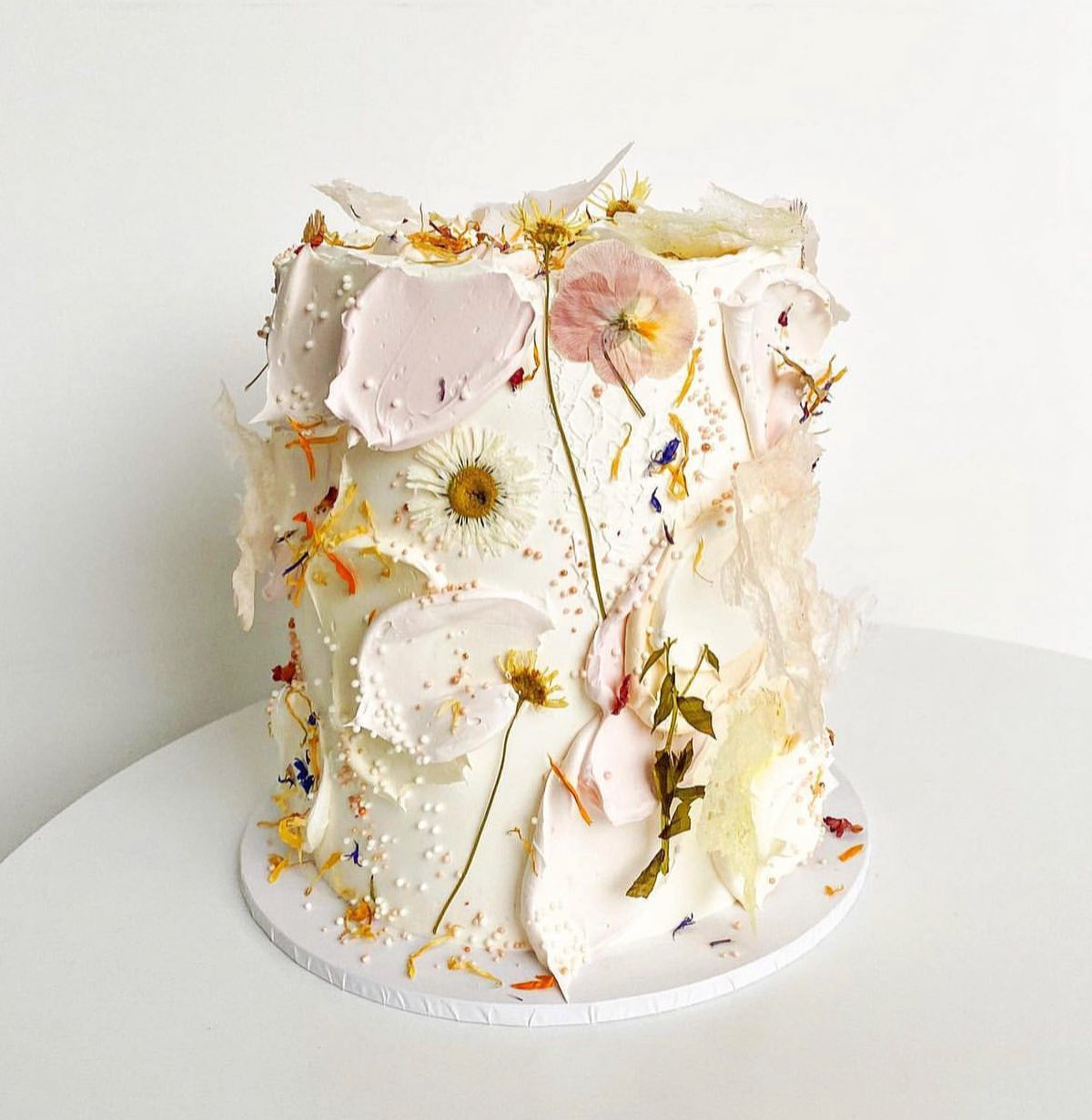
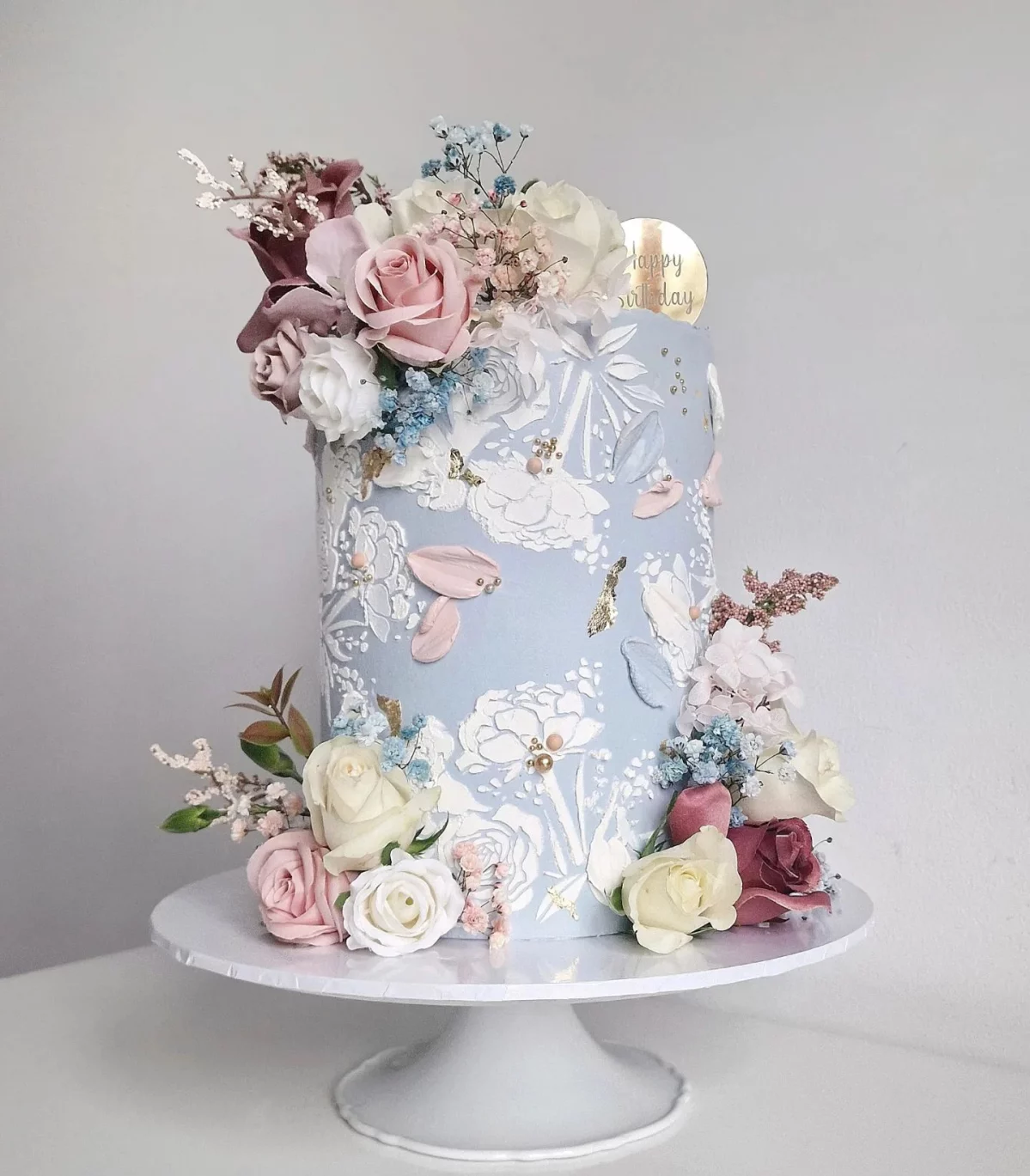
The Food-Safe Barrier is Non-Negotiable: Never insert a raw flower stem directly into your cake. Even if the flower is edible, the stem can leech bitter flavors or moisture. The professional method involves creating a barrier. You can tightly wrap the bottom inch of the stem with floral tape, like the kind from Oasis, or for total security, insert the wrapped stems into food-grade holders called flower pics. This ensures nothing from the plant ever touches the cake itself.
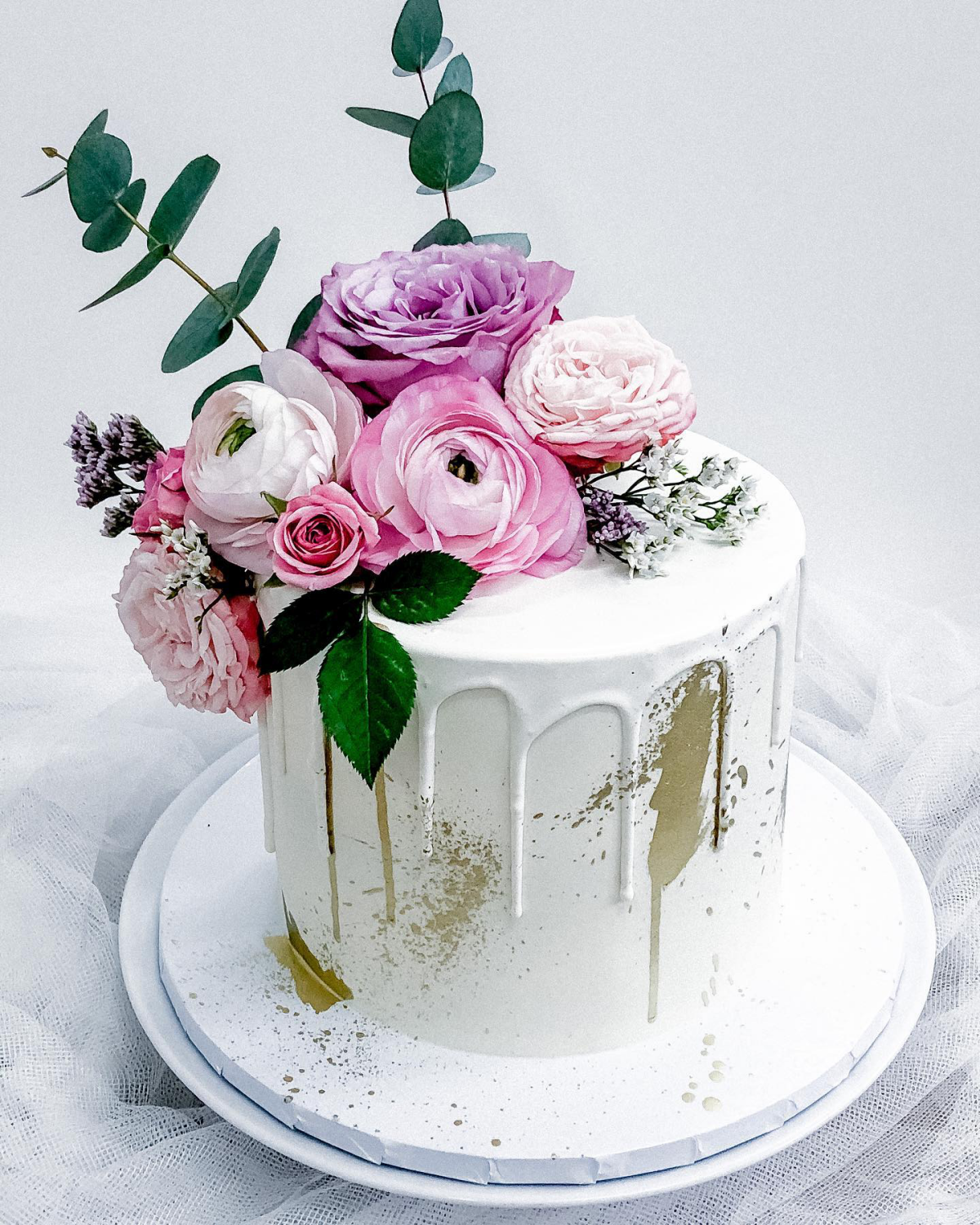
More than just beautiful, some flowers are delicious. Nasturtiums offer a surprising peppery kick, while tiny violas have a subtle, sweet wintergreen flavor.
This opens up a new dimension for cake decorating, where the florals aren’t just for show but can actively complement the cake’s flavor profile. Imagine a lemon cake with peppery nasturtiums or a delicate vanilla bean cake adorned with sweet, minty violas. It’s a sensory experience that goes beyond the visual.
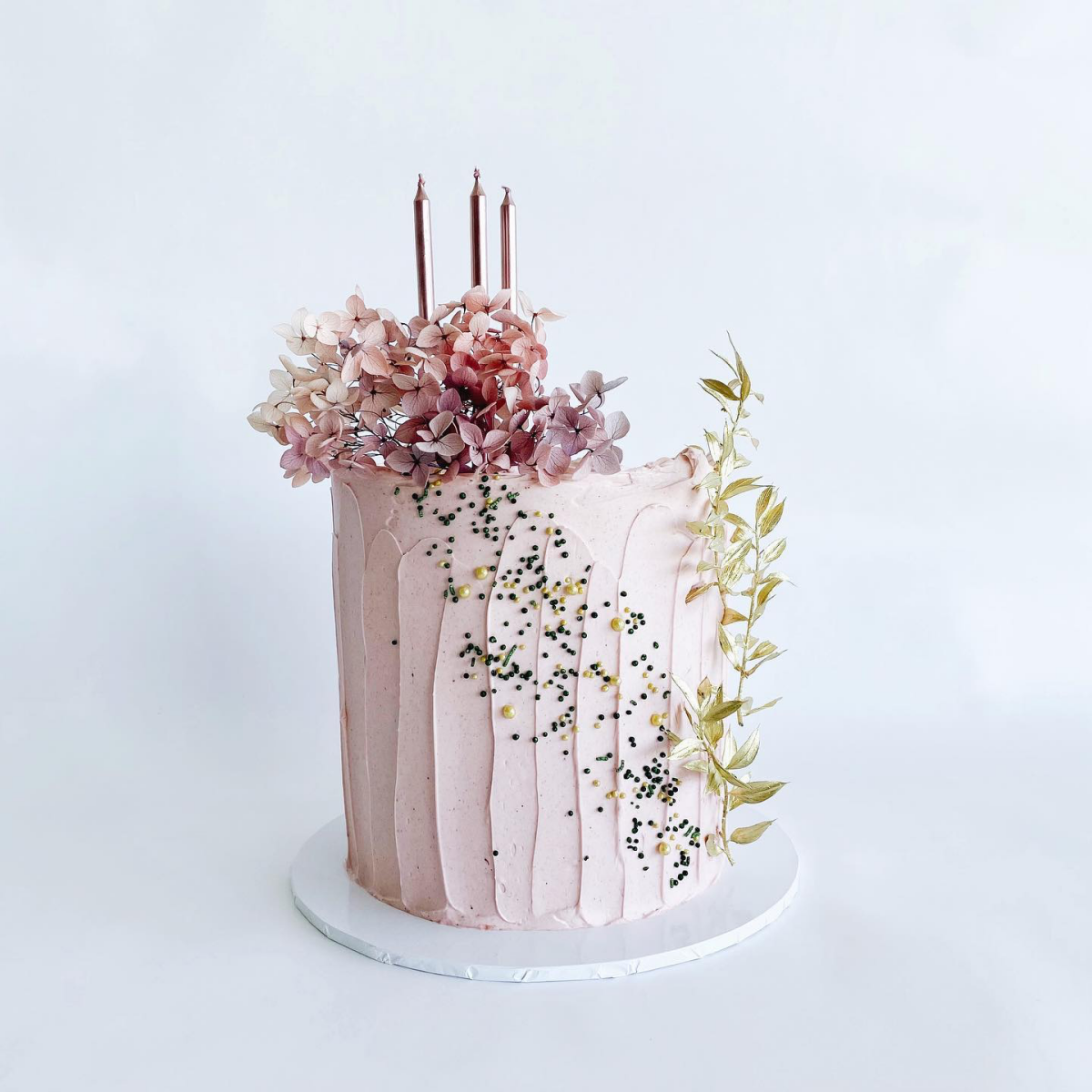
Want a modern, artistic floral touch without the bulk?
Consider pressed edible flowers. These are fresh, food-safe blossoms that have been carefully pressed and dried, retaining their vibrant color in a delicate, two-dimensional form. You can arrange them on the sides of a buttercream cake to create a stunning watercolor or terrazzo effect. They are completely edible and eliminate any safety concerns. You can find beautiful assortments from specialty suppliers like Gourmet Sweet Botanicals, or even press your own from an organic garden.
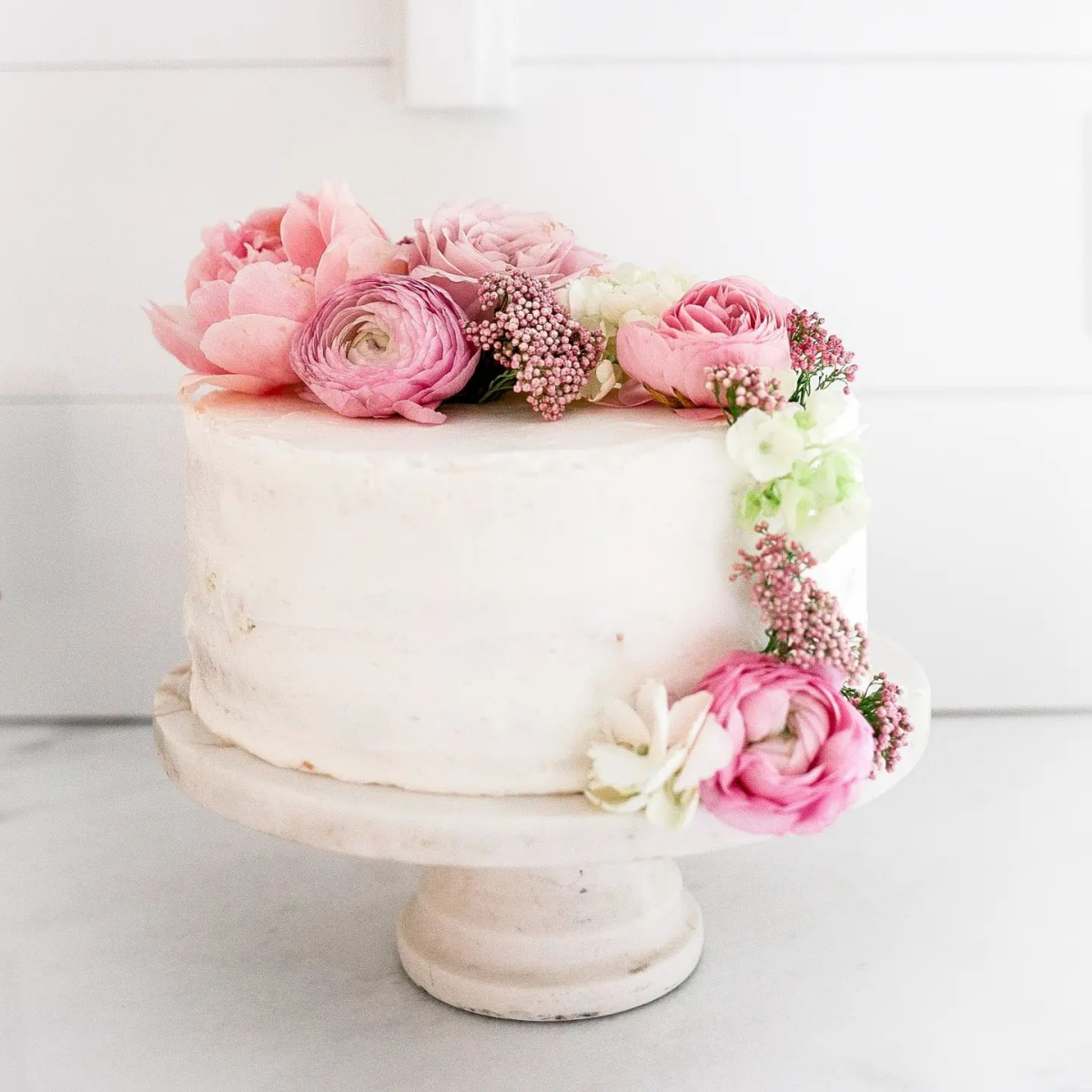
When choosing your flowers, think about the atmosphere you want to create, not just the color scheme.
- For a wild, bohemian, or meadow-inspired cake, use a mix of small, delicate flowers. Think chamomile, lavender sprigs, and tiny feverfew daisies. Their varied shapes and textures create a feeling of natural, effortless beauty.
- For a dramatic, romantic, or classic statement, opt for large, luxe blooms. A few perfectly placed garden roses, peonies, or dahlias will provide maximum impact and a sense of timeless elegance.
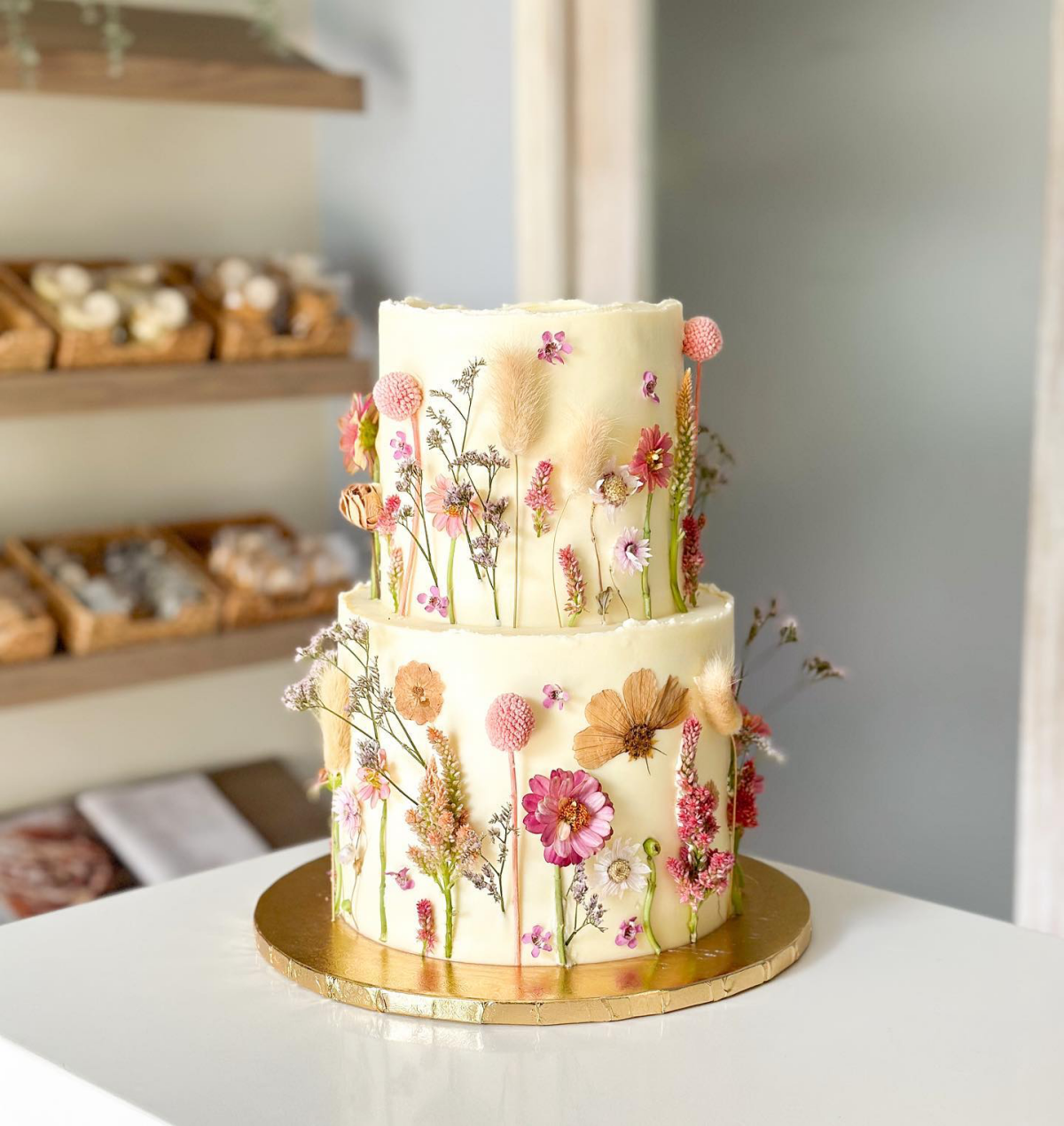
Don’t forget the power of green. Adding foliage can elevate your floral design from pretty to professional. Trailing jasmine vine (flowers removed, as they are toxic), silver dollar eucalyptus, or even fragrant rosemary sprigs can add movement, provide contrast, and fill in gaps between larger blooms. Just be sure to apply the same food-safety rules to the greenery as you do to the flowers!
- They won’t wilt in the heat.
- They are 100% food-safe.
- They can be kept as a souvenir.
The secret? High-quality silk or fabric flowers. While once considered a faux-pas, modern artificial florals from brands like Afloral are incredibly realistic and offer a practical, stress-free alternative for destination weddings or warm-weather events. They provide the look of fresh flowers without any of the risk.










